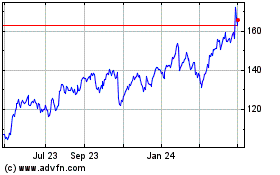By Nicole Nguyen
Google Photos had me from the start with a killer feature: free,
unlimited photo and video backup. The caveat? It compressed image
files larger than 16 megapixels.
I knew, when the service launched in 2015, that the perk
couldn't last forever. Millions of people dumping all their
snapshots into the cloud? It wasn't sustainable, even for
Google.
Next month, Google Photos is ending its free tier. After June 1,
any newly uploaded media will count toward the 15 gigabytes
included with any Google account -- unless you currently own a
Pixel phone. That means your photos compete with your Gmail and
anything in your Google Drive. If you have had the account a while,
you might already be close to full. Many people will need to
upgrade to a paid plan or back up their photos elsewhere.
The change gives us freeloaders the opportunity to rethink the
future of our digital memories. Here's one option for archiving
your photos offline, plus a look at different online backup
options.
Set up an offline backup system
While online services are the easiest way to back up and access
your photos, we first need to discuss a way to store photos
yourself. If you don't choose to use an online option, you would
still have this, and even if you do, it's nice to have an offline
backup. Your memories are too precious!
I have a monthly calendar event reminding me that it's time to
transfer smartphone photos to an external hard drive. Solid-state
drives are pricier, but they will transfer images and videos faster
than hard disk drives and are less likely to fail.
To import, connect your phone to your computer, and open an app
like Image Capture on Mac or Photos on Windows. From there, you can
move your photos to a connected external drive, just by dragging
and dropping. That way you don't have to deal with the complicated
folder structures that come with photo managers.
In addition to an external drive, I like the gum-stick-size
SanDisk iXpand Flash Drive Luxe ($60 for 128 GB). It's ideal for
traveling, when you're inevitably taking a lot of photos and
quickly want to free up phone space. It starts backing up my
library as soon as I plug it into my iPhone's Lightning port and
fire up the iXpand app. Within 10 minutes, 1,000 photos are backed
up to the drive. (There's also a USB-C model for Android users.) At
home, I plug it into my computer and transfer the images to my main
hard drive.
Choose an online photo storage service
The apps for cloud photo services can automatically upload all
the photos you take with your phone. Apple does it quietly in the
background on iOS devices; Google does the same on Pixel phones.
Third-party apps need to be opened, but then they grab all new
photos without further action.
Some services auto-sort pictures by who's in them or where they
are taken. (This is especially fun when you've digitized your old
photos.) Albums can easily be shared with family and friends, using
a simple web link. And they can free up storage space on your
mobile device or computer.
The problem? If you want to store more than a small amount, you
generally need to pay a recurring fee, one more for your growing
list of subscriptions.
Fortunately, photo storage may be included in a subscription you
already have. (Hi, Amazon Prime members!) If it isn't, I've
calculated the gigabytes-per-dollar cost of the most popular photo
services. To get maximum value, pay for only the storage you need
at any given time, or share a larger allotment with family
members.
Estimate your storage needs with this quick storage math: 1,000
megabytes (MB) = 1 gigabyte (GB), while 1,000 GB = 1 terabyte (TB).
Photos vary in size. My images generally range from 3 to 8 MB.
Videos can vary far more widely depending on their length.
Once you have an idea of what you might need, here are the top
services to consider:
Google Photos
Good for: Photo search and sharing, and people who currently own
Pixel phones
Free storage: 15 GB across Google services, including Gmail and
Drive
Annual pricing:
$20 for 100 GB (5 GB per dollar)
$30 for 200 GB (6.6 GB per dollar)
$100 for 2 TB (20 GB per dollar)
Family sharing: Up to 6 members
It wasn't cool for Google Photos to start charging. Still, it
has a lot of features worth paying for, and some ways to save you
money so you can avoid the most expensive tier. You can opt to
upload your photos in slightly compressed resolution, rather than
original, if you don't mind giving up a little quality for extra
runway. In June, the app will provide a tool that can identify the
dark or blurry images bloating up your library.
The search is, unsurprisingly, excellent. Many services offer
image search by face, but Google's is best -- and it recognizes
pets, too. You can also search for activities like "hikes" or
weather conditions like "fog."
Sharing is also better. Each shared album has a message thread
where you can see likes and comments from collaborators on specific
pictures -- a fun way to relive a group trip. Partner sharing
automatically shares photos between two people. You can limit
partner access to pictures of selected faces, such as your dog and
your kids.
Not your jam? You can export your photos using Google
Takeout.
Apple iCloud
Good for: People who exclusively use iOS and Mac devices
Free storage: 5 GB across iCloud, including phone backups
Annual pricing:
$12 for 50 GB (4.1 GB per dollar)
$36 for 200 GB (5.5 GB per dollar)
$120 for 2 TB (16.6 GB per dollar)
Family sharing: Up to 6 members, but only for higher two
tiers
The idea behind iCloud Photos is that you have one mega library
synced across all your devices. Of course, it's designed to back up
Apple devices only. The service is very convenient -- you just turn
it on in iPhone settings and photos are automatically backed up as
you take them.
I recommend enabling Optimize Storage, which replaces photos and
videos with lower-resolution versions in your local device library
to free up space. You can tap to download full-size images from
iCloud at any time.
Just know that when you delete a photo from your iPhone or Mac,
it removes the image from your iCloud backup, too. There are also
better deals out there. And you can invite only other Apple users
to collaborate on shared albums.
Amazon Photos
Good for: Prime members, people with Amazon devices
Free storage: 5 GB
Annual pricing:
Unlimited photo, but not video, storage is included in the
$119-a-year Prime membership; for access without Prime, or more
video space, you would pay:
$20 for 100 GB (5 GB per dollar)
$60 for 1 TB (16.6 GB per dollar)
$120 for 2 TB (16.6 GB per dollar)
Family sharing: For Prime members only, up to 6 people
Amazon Photos is likely the most underused Amazon Prime perk.
Members get unlimited, full-resolution photo storage using the app.
The catch? Users are capped at 5 GB of total video storage. I found
the backup speed to be slower than the others. Amazon solved this
with its "overnight backup" feature, which lets you upload big
batches while you sleep.
Microsoft OneDrive
Good for: Microsoft Office and Skype users
Free storage: 5 GB, including any files in OneDrive
Annual pricing:
$24 for 100 GB (4.1 GB per dollar)
$70 for 1 TB (14.2 GB per dollar; includes Microsoft Office)
Family sharing: Microsoft 365 Family ($100 a year), up to 6
people
OneDrive doesn't have as many photo-specific features as its
competitors. A spokeswoman said the web app is adding photo-editing
capabilities later this month. Still, it's a good deal for
Microsoft 365 subscribers, and comes with Office and 60 minutes of
landline or international Skype calling.
The service also has native integration with the photos app on
Samsung phones, called Gallery, and can store Samsung Motion Photos
as well as 8K video.
Flickr Pro
Good for: People who want a simple plan
Free storage: 1,000 photos and videos
Annual pricing: $60
Family sharing: Not available
Flickr has a generous free tier, and if you max that out, it
offers one flat rate for unlimited uploads. It's good for those who
take a lot of photos and don't want to worry about storage limits.
The service also offers nice tagging and organization options.
There are limits, but pretty high ones: Each photo can be up to
200 MB -- more than plenty for mobile-phone photographers -- and
each video can be up to 1 GB.
Another concern is that Flickr has changed hands a few times. It
was most recently acquired by a company called SmugMug. In December
2019, SmugMug Chief Executive Officer Don MacAskill emailed users
with a plea to help the company find more paying users, or else "we
cannot continue to operate it at a loss as we've been doing." A
company spokesman said the response to the letter was positive, and
SmugMug "continues to invest heavily in the product."
If things go south, you can export all your content and take it
elsewhere.
For more WSJ Technology analysis, reviews, advice and
headlines,
sign up for our weekly newsletter
.
Write to Nicole Nguyen at nicole.nguyen@wsj.com
(END) Dow Jones Newswires
May 16, 2021 09:14 ET (13:14 GMT)
Copyright (c) 2021 Dow Jones & Company, Inc.
Alphabet (NASDAQ:GOOGL)
Historical Stock Chart
From Mar 2024 to Apr 2024

Alphabet (NASDAQ:GOOGL)
Historical Stock Chart
From Apr 2023 to Apr 2024
